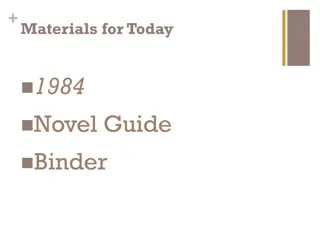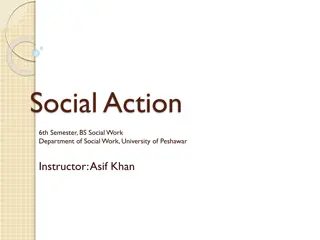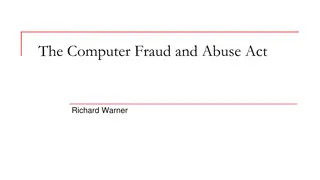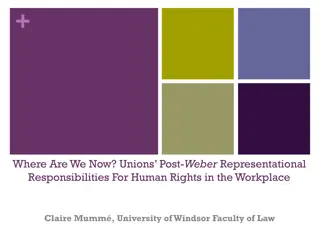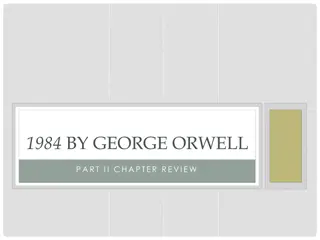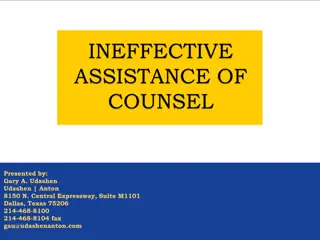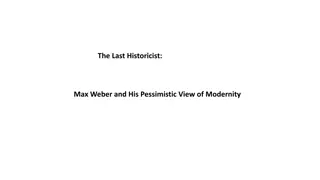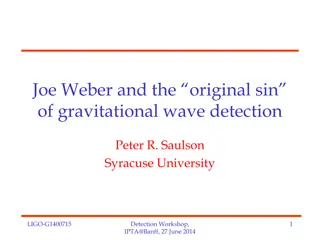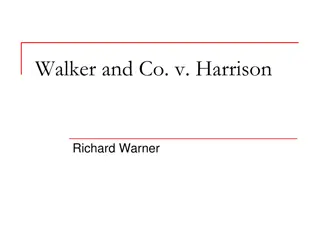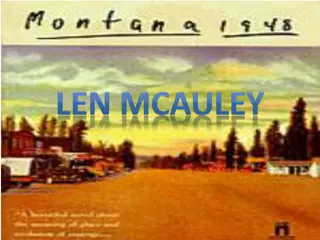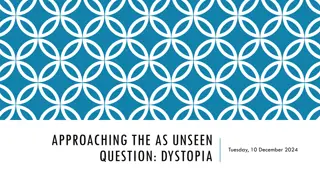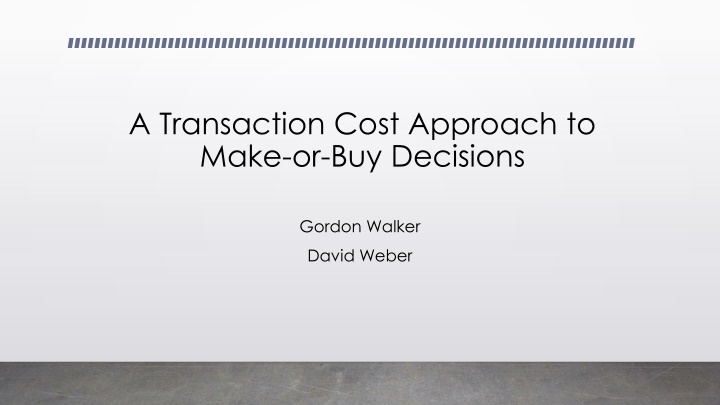
Transaction Cost Approach for Make-or-Buy Decisions
Explore the transaction cost approach in make-or-buy decisions, analyzing factors like supplier market competition, volume uncertainty, technological uncertainty, and comparative production costs. Understand the impact of uncertainty and asset specificity on decision-making processes, emphasizing the importance of buyer experience. Delve into the literature gap, highlighting the joint conditions of asset specificity and uncertainty in decision-making.
Download Presentation

Please find below an Image/Link to download the presentation.
The content on the website is provided AS IS for your information and personal use only. It may not be sold, licensed, or shared on other websites without obtaining consent from the author. If you encounter any issues during the download, it is possible that the publisher has removed the file from their server.
You are allowed to download the files provided on this website for personal or commercial use, subject to the condition that they are used lawfully. All files are the property of their respective owners.
The content on the website is provided AS IS for your information and personal use only. It may not be sold, licensed, or shared on other websites without obtaining consent from the author.
E N D
Presentation Transcript
A Transaction Cost Approach to Make-or-Buy Decisions Gordon Walker David Weber
Research Question Make-or-buy decisions are considered as a paradigmatic (or canonical) problem for analyzing transaction costs given their relevance for vertical integration. How do supplier market competition, volume uncertainty, technological uncertainty, and comparative production costs between buyer and supplier affect the make-or-buy decision?
TCE and Make-or-Buy Decision Two dimensions: (1) the uncertainty associated with executing the transaction; and (2)the uniqueness or specificity of the assets associated with the goods or service transacted. Main Logic: individuals have limited information-processing capacity and are subject to potential opportunistic bargaining, high uncertainty makes it more difficult for the buyer of the goods or service to evaluate the supplier's actions (due to incomplete contracts), and high asset specificity makes opportunistic supplier decisions particularly risky for the buyer because of potential economic hold-up problems. Unilateral control over production thus reduces the buyer s risk.
Literature Gap In addition to vertical integration, this article also discusses vertical de-integration; Asset specificity and uncertainty are joint conditions for make decisions. This study allowed to each of these variables to influence make-or-buy decisions independently; Sufficient uncertainty was inherent in all transactions included in the study to make it very difficult for the buyer to neutralize potential supplier opportunism effectively through contingent claims contracts (Williamson, 1975: 22); Therefore, any increase in asset specificity would tend to increase transaction costs. Because of the way that the types of uncertainty examined influenced transaction costs, it is assumed that they did so independently of the level of asset specificity.
Two types of uncertainty Volume uncertainty: Fluctuations in the demand for a component and confidence placed in demand estimates. High VU imposes increased production costs and excess capacity on suppliers and excess inventory or stock outs on buyers. Increase in VU leads to increase in TC. Technological uncertainty: Changes in component design (retooling). Increases buyer costs (re-contracting with supplier). Thus, TU increases the likelihood of a make decision.
Theory Development: Uncertainty H1: Volume Uncertainty + Make H2: Technological Uncertainty + - Buyer Experience* *Greater buyer experience, reducing technological uncertainty and thereby the risk of opportunism, should lead to the Buy decision.
Theory Development: Competitive Production Cost H3: Competitiveness of Supplier Market + Supplier Production Cost Advantage + Buy - Buyer Experience* *Greater buyer experience in producing should reduce the supplier s relative production cost advantage, leading to the Make decision. This is offset, however, by the relationship between buyer experience and technological uncertainty shown in the previous slide. The authors expect greater buyer experience to make the Buy decision more likely.
Methodology The data consisted of 60 decisions made in a component division of a large U.S. automobile manufacturer over a period of three years. The sample of 60 emerged by exception from the roughly 20,000 parts the division used for assembly. The production of 20 components, out of 49 previously made, was shifted to the market, and four out of nine components previously bought were brought inside the firm. Two components in the sample were new. Questionnaire? Interview? (They provide reliability measures later, but most are below 0.7). Unweighted least squares (ULS) procedure of Joreskog and Sorbom (1982).
Empirical Results Corroborated: Volume uncertainty and comparative production costs. VU receiving more attention than TU may owe to demand estimates as a priority over retooling. Moderately Corroborated: Competitiveness of Supplier Market Not Corroborated (i.e., Falsified): Technological Uncertainty (positive TU was associated with buy decisions), Effects of competition and Buyer Experience (NB: For an explanation of the technological uncertainty result, see Balakrishnan and Wernerfelt (1986). Finding: Comparative production costs had a predominant influence on make-or-buy decisions over transactions costs.
Discussion Empirical Problem: small sample, not random, not generalized, alternative model specifications not considered, missing variable problem. Also, common method bias given the heavy reliance on survey data. Measurement of make-or-buy, binary or non-binary Mixed empirical corroboration of TCE Old good days: several hypotheses are falsified and still published Uncertainty and Asset Specificity: joint or independent?



